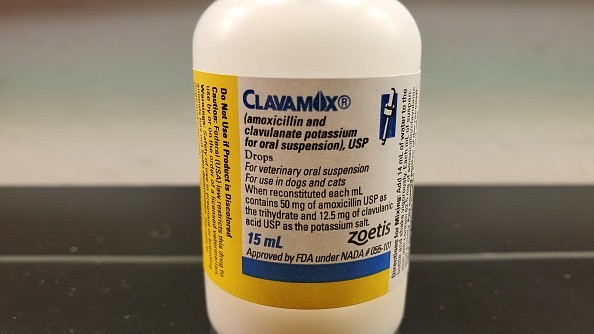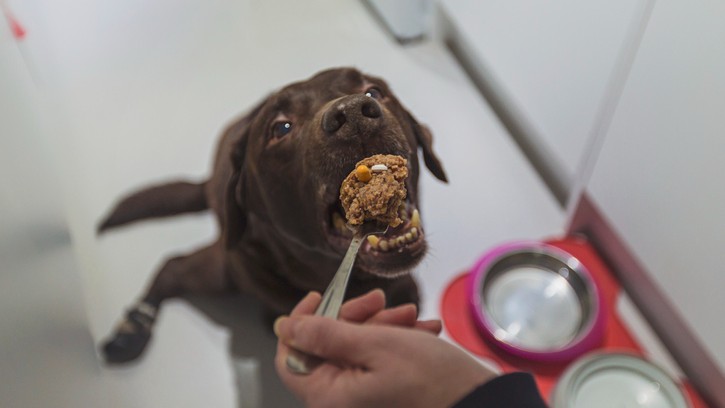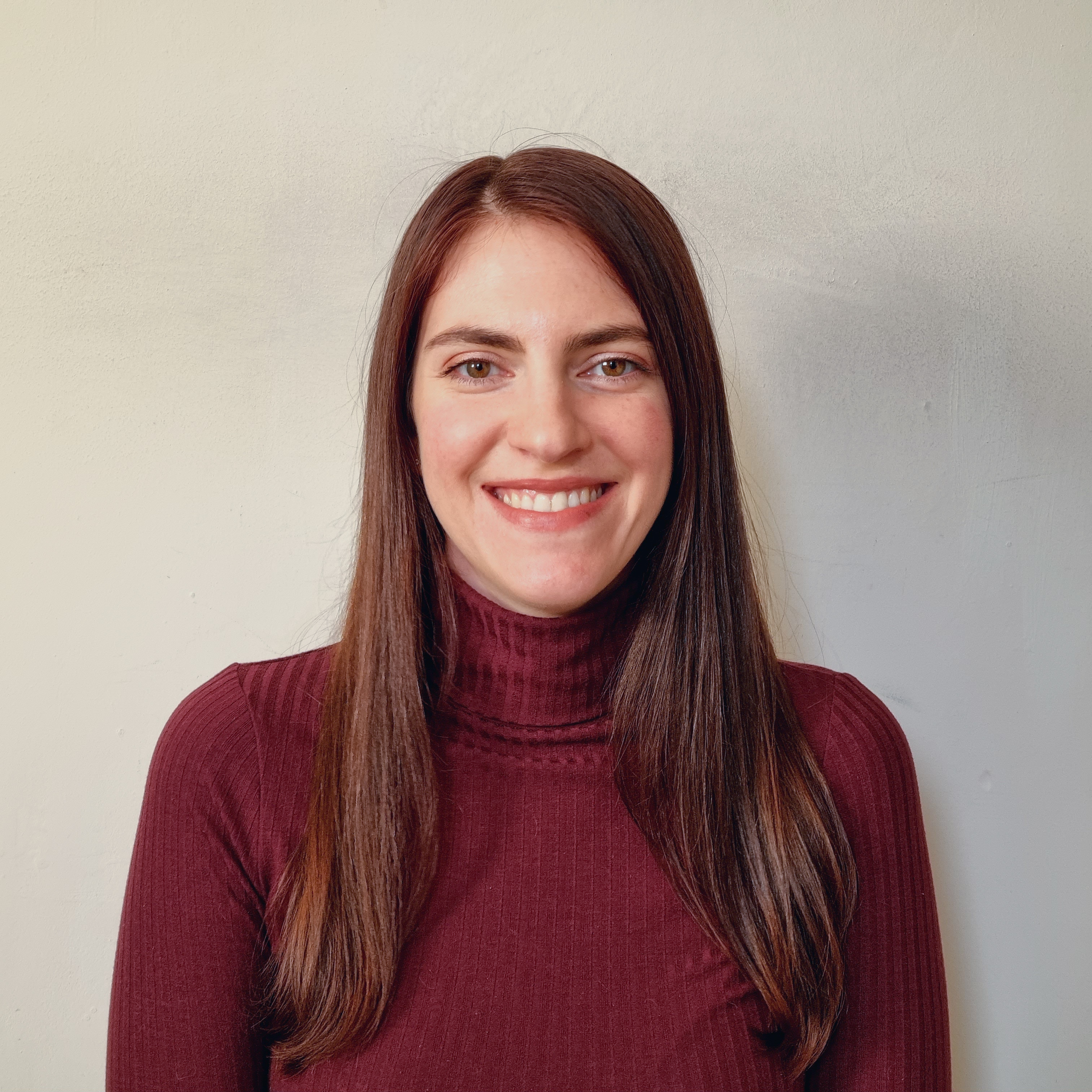A vet’s guide to Clavamox for dogs
Clavamox for dogs is one of the most commonly prescribed antibiotics in veterinary medicine – keep reading to learn more about this drug

Clavamox for dogs is often prescribed if your pet has an infection, or maybe you wanted to give it at the same time as gabapentin. Regardless of the reason, many owners would like to learn more about the medications that their pets are prescribed. Let’s take a closer look at what Clavamox is and its uses in dogs.
What is Clavamox for dogs and how does it work?
Clavamox is a broad-spectrum antibiotic medication containing amoxicillin and clavulanate potassium that is commonly prescribed in veterinary medicine. Amoxicillin belongs to the penicillin family of antibiotics, and it is effective against many different species of bacteria.
Some bacteria produce an enzyme called β-lactamase, which can inactivate antibiotics that contain a β-lactam ring, i.e. penicillins and cephalosporins. This is where clavulanate comes in – it can inhibit the β-lactamase enzyme. This allows amoxicillin access to the bacteria, where it punches holes in the bacterial cell wall, causing these bacteria to swell, rupture, and die. The combination of amoxicillin and clavulanate is therefore very effective in various infections.
Since Clavamox is an antibiotic, it does not treat viral, fungal, or parasitic infections. It is also not effective against some types of bacteria.
What is Clavamox used for in dogs?
Clavamox is indicated for the following conditions in dogs:
- Skin and soft tissue infections, including wounds, abscesses, cellulitis, and pyoderma
- Gum diseases and infections with susceptible strains of aerobic and anaerobic bacteria
Your vet may want to take a sample from your dog before starting Clavamox to ensure that it will be effective. Alternatively, a sample may be taken if your dog does not respond to Clavamox.
Clavamox is also used in cats for skin infections and urinary tract infections. It should not be administered to rabbits or rodents because it can kill off healthy gut bacteria and result in severe diarrhea and even death.
Get the best advice, tips and top tech for your beloved Pets
How is Clavamox given?
Clavamox is administered orally as either a chewable tablet or liquid drops. The chewable tablets are pork and liver flavored and easy to administer. In fact, Zoetis, the drug manufacturer, found that 83% of dogs accepted the chewable tablets voluntarily from a food bowl or their owner’s hand.
The tablets should be stored at room temperature in their original packaging. If your dog has been prescribed the Clavamox drops, they should be stored in the refrigerator and used within 10 days.
Although there are human formulations of Clavamox, these should never be given to your dog unless specifically prescribed by your vet. Human formulations have a different ratio of amoxicillin to clavulanate, which can cause unwanted side effects and possible overdose.

Dosage of Clavamox for dogs
According to Zoetis, the recommended dose of Clavamox is 6.25 mg/lb (13.75 mg/kg) for the chewable tablets or 1 mL/10 lb (1 mL/4.5 kg) for the drops, given twice a day. Clavamox should be given for at least 5-7 days for most infections, and cases of deep pyoderma may require treatment for up to 21 days. Clavamox should not be given for more than 30 days.
If you have concerns regarding your dog’s dose of Clavamox, consult with your vet before making any changes to the dose or stopping the medication – these actions can reduce the efficacy of the medication, cause relapse of the infection, or contribute to the development of antibiotic resistance.
If you miss a dose of your dog’s Clavamox, do not double the next dose, as this may cause unwanted side effects. Instead, give the next dose as scheduled and continue with the regimen as prescribed.
Clavamox chewable tablets | Chewy
You’ll need a prescription from your vet, but Clavamox chewable tablets are available from Chewy in a range of strengths and pack sizes.
Side effects of Clavamox in dogs
The most common side effects reported in dogs include:
These symptoms should subside once the antibiotic course is finished. Some owners find that giving the medication with food reduces nausea. It is always best to contact your vet regarding any side effects in case your dog would benefit from a dose change or alternative antibiotic.
As with all medications, some dogs may have an allergic reaction to Clavamox. For this reason, it is recommended that you keep an eye on your dog after giving the medication, especially after the first few doses. If your dog shows any signs of an allergic reaction or anaphylaxis such as skin rash, hives, rapid breathing, itchiness, discharge from the nose or eyes, conjunctivitis, or swollen face/muzzle, you should seek veterinary attention immediately.
Precautions for Clavamox usage
Clavamox should be avoided in dogs with a history of allergy or sensitivity to any type of penicillin or cephalosporin. In addition, humans with a known allergy to these medications should avoid administering the medication where possible, as contact with the skin or mucous membranes can trigger an allergic reaction.
The safety of Clavamox in pregnant, lactating, and breeding animals has not yet been determined, so vets will only prescribe it in these dogs when the benefits outweigh the risks.
Lastly, Clavamox may interact with other medications that your dog receives, affecting their efficacies. It is important that your vet is aware of any medications that your dog is given when they prescribe Clavamox. Some medications that may interact with Clavamox include antacids, other penicillins, cephalosporins, tetracyclines, chloramphenicol, some pain medications, blood thinners, probenecid, pentoxifylline, and methotrexate.
Prognosis with Clavamox
Although it may take a few days to see an improvement in your dog’s condition, most skin, soft tissue, and gum infections will resolve after a course of Clavamox. If your dog isn’t getting better, you should make an appointment with your veterinarian for a full physical examination and relevant tests such as sampling the infected area to send to the lab for analysis. Some infections may require a longer antibiotic course or a different antibiotic altogether.
Dr. Diana Hasler graduated with distinction from the University of Edinburgh Royal (Dick) School of Veterinary Studies in 2018. She has experience working as a small animal veterinarian in general practice, where she has treated many dogs, cats, rabbits, and rodents. She has also recently branched out into the field of medical communications, doing freelance work as a medical editor and writer. Dr. Hasler has been Postdoctoral Research Fellow at Michigan Medicine since 2023, where she is a Laboratory Animal Medicine Resident.


